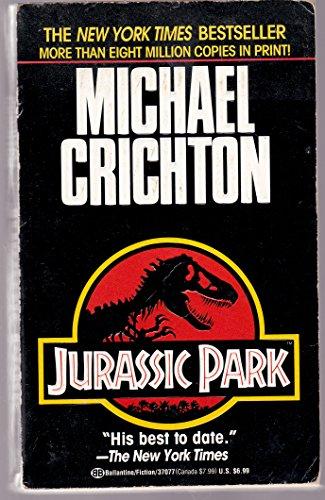Book Review: Jurassic Park by Michael Crichton
A monster stalks Isla Nublar, red in tooth and claw, seeking whom it may devour. It is a deadly threat to all who live, merciless, implacable–some might call it evil. The name of this monster is not stegosaurus or velociraptor, or even Tyrannosaurus Rex. The name of this monster is Capitalism.

This 1990 novel was phenomenally successful, spawning a movie franchise and even getting Michael Crichton to write a rare sequel. It’s about time I got around to reading it.
Going in knowing the premise makes this book a little frustrating, as the author tries to create a sense of mystery in the first few chapters. A doctor gets an emergency patient with inexplicable wounds, and it’s suggested a creature from Costa Rican folklore is responsible. Then a little girl is bitten by a previously unknown species of lizard, and an effort is made to identify the creature. Neither of these really matter in the main plotline.
Finally on page 80, we get to the premise. Entrepreneur John Hammond is cloning dinosaurs* to create a theme park. There have been a few minor glitches, and the investors are getting antsy, so Hammond invites a number of people to Isla Nublar to see that Jurassic Park is doing just fine and will be able to open on schedule. Nothing can possibly go worng!
*It’s explained later in the novel that the scientists are not, in fact, cloning dinosaurs, but genetically engineering creatures using partial dinosaur genetic material that look how we imagine dinosaurs appeared. The difference between the two techniques is a plot point.
As mentioned in my opening, one of the themes of the book is how capitalism, and in particular the tying of scientific research to the desire to make a profit, ruins things. Greed for money drives many of the poor decisions in the book. Most notably, Hammond’s priorities cause the scientists he’s hired to take shortcuts without considering the long-term ramifications (“They were so preoccupied with whether they could that they didn’t think about whether they should.”) He invests a lot of attention to the spectacle that will be visible to the public, while shortchanging important safety measures. And of course, underpaying the guy who designed your computer security system is a non-starter.
There’s a moment, darkly humorous in hindsight, when Hammond explains that he decided to use bioengineering to make amusement park attractions rather than life saving medical treatments…because the U.S. government would never let him get away with cranking up the price of vital medications to ludicrous levels for the sake of profit.
It’s honestly a bad enough set of decisions that the book hardly needs trendy chaos theory mathematician Ian Malcolm to explain what went wrong. On this reading he comes across as the author’s mouthpiece about how modern society went horribly askew; Crichton’s cranky old man viewpoint peeking through.
Crichton clearly did his research; there’s enough actual scientific detail so that when he just makes something up to fill in the gaps, it’s plausible in the moment. When he describes a particular moment of corporate malfeasance early on, it took me a couple of pages to realize this was a fictional company and incident.
This is a good potboiler novel that made an even better movie. Recommended to dinosaur carnage fans.

